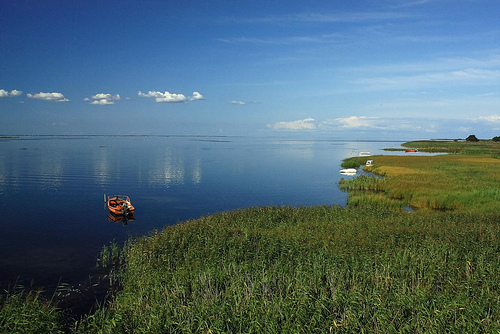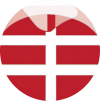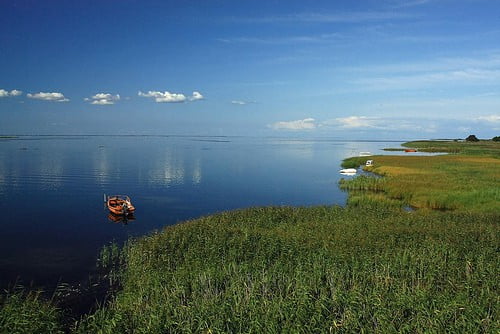Inhalt dieses Beitrages

Have you heard of Ulvshale? No? It simply offers everything your heart desires. Beautiful beaches and forests, clean sea, a campsite, Vacation homes and numerous shopping opportunities.
Of course, everything you need to live is available in Ulvshale. There are also nice little restaurants and the island of Moen is connected to other islands by bridges and you don’t need more than an hour to get to Germany and Sweden by ferry.
Ulvshale is located on the island of Moen (Mön), a 218 square kilometer island in the Baltic Sea, and is part of Denmark. About 10,500 people live on the whole island.
Ulvshale is the most popular beach on the north coast of Moen Island. There is a wide range of holiday homes, so there is definitely something for everyone. Also in the Ulvshale forest – which is under nature protection – there are some holiday homes, ideal for holidaymakers who want a quiet stay in the cool shade of the trees and still be close to the beach. You can spend your free time in the nature center, on nature trails or on guided hikes through the forest.
The special thing about Ulvshale is the good water quality – which comes from the strict observance of certain environmental conditions and has been awarded the blue flag. The beach is also very suitable for families with children, as the water doesn’t get too deep and there are hardly any high waves.
Numerous activities make a holiday on Ulvshale an experience. Those who like to play golf, for example, will enjoy the 18-hole golf course, which is only 6 km from Ulvshale. There are also opportunities for boating, windsurfing and fishing.
One of the sights on Ulvshale is the fairy tale forest, which amazes and dreams with its many handmade felt figures.
Those who are interested in culture will not be disappointed either. 6 km south of Ulvshale is the medieval town of Stege, which reflects the 1000-year history of the city. The church “Fanefjord Kirke” from the 13th century with its famous frescoes can also be visited.
Ulvshale forest
Ulvshales Forest (“Wolfs-tail Forest”) does not look like any other forest in eastern Denmark. Large parts of the forest can develop freely and naturally, without any interference from people. Only the paths are kept clear of vegetation and falling branches. In other parts of the forest, careful construction is allowed in order to preserve the character of the forest.
Ulvshale Forest has a varied vegetation and many natural tree species in Denmark grow here, such as beech, birch, witch-elm, aspen, ash, hornbeam, alder and rowan.
The forest also contains Denmark’s largest healthy population of linden trees with small leaves. However, oaks are the most common tree species in Ulvshale Forest.
The vegetation sprouts just as diverse under the crowns of the nocturnal trees. Bracken, ivy, buckthorn, hawthorn, crab apple tree, blueberries, and blackberries are all found in the forest.
Lily of the valley, May-Day flowers and wood anemones: where the light reaches the ground, some interesting plants grow. Many smaller birds are attracted to these living conditions.
The salt marshes:
Both in the north and in the south of the Ulvshale forest lie large salt marshes. One in the north is called “Fællesgræsningen” and the one in the south is called “Horsnaes Enge” and “Vedelen”. Together with the large meadow on the Nyord, these meadows are extremely important breeding grounds for many different birds.
The salt marshes are rich in mudflat birds, ducks, herons and many migratory birds use the meadows as resting places before they fly further south.
The northern meadow was once a pasture. The small hut that you will find on the edge of the area still bears witness to the former agricultural use.
In order to keep the meadows as resting and nesting areas as possible, it is necessary to keep the vegetation as it is – and this is done by cows and sheep.
When the grass is low, the birds have a good view of the meadow and feel safe.
The moor
To the south of the Ulvshale forest lies the large bog “Heden”. This place is dominated by heather and juniper, but there are also places where you can find cotton grass and sundew insects.
The moor is also home to the rare black adders. In the north of Ulvshale forest there is also a small moor where you can find an old ski jump.
The ski jump:
On the northwestern tip of the peninsula is the old ski jump “Skansen”, as a reminder of the war against England in the last century. Between 1807 and 1814, the Møn militia kept an eye out for the English ships under their protection. The strong current forced the English ships to sail close to the coast and therefore they became an easy target for the Danish cannons.
Take a vacation to Ulvshale, you will enjoy it! You can find your holiday home here .

